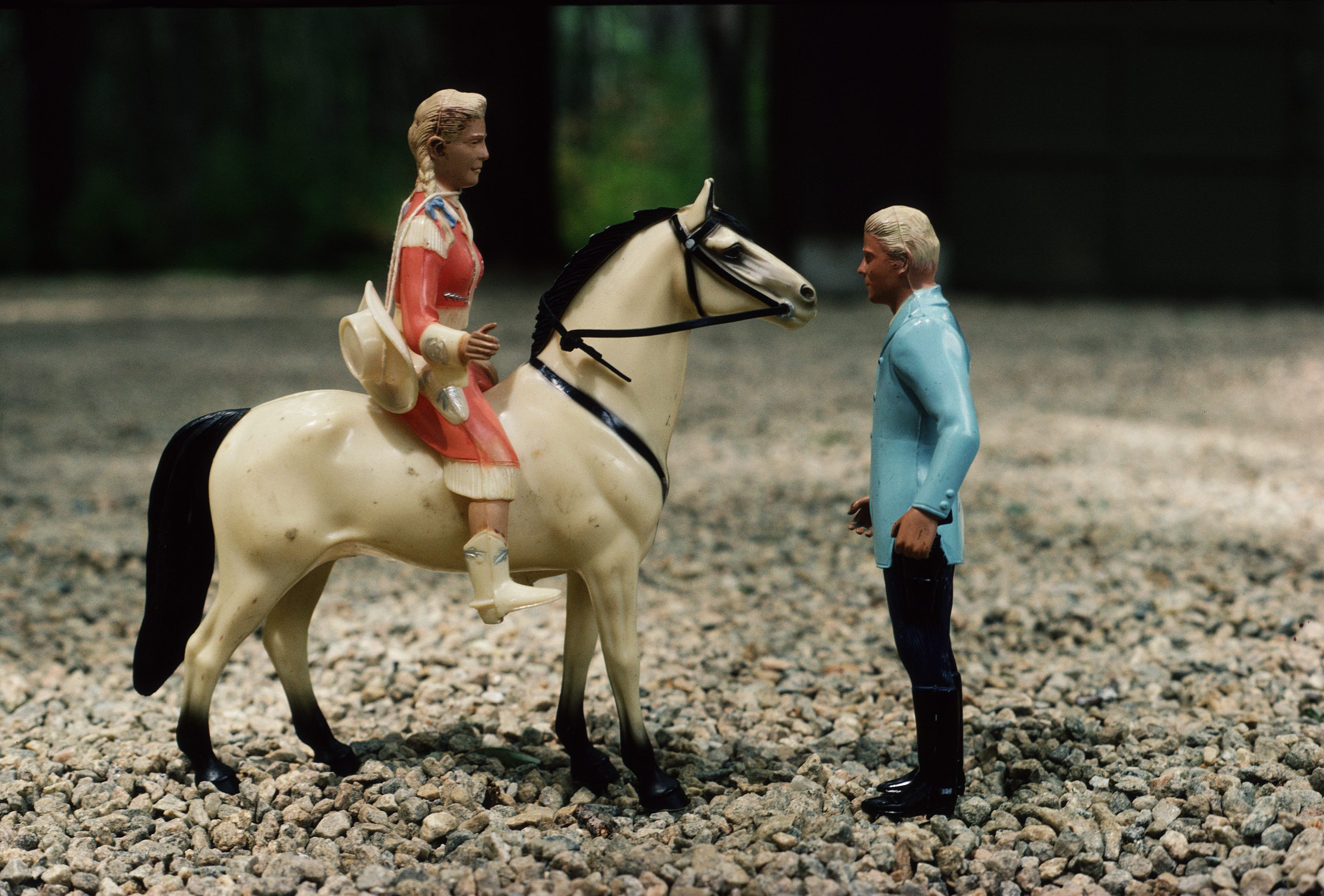The offbeat, fantasy world of Laurie Simmons
- Text by Miss Rosen
- Photography by Laurie Simmons

Have you ever wanted to step into a picture and live in that world? It’s a feeling American artist Laurie Simmons knows very well. “When I was a child, I had a strong desire to enter into the drawings in the storybook,” she says. “I can remember sitting on my mother’s lap and feeling this frustration. I wanted to get inside and walk around with the characters.”
As a member of The Pictures Generation (a group of American artists from the 70s who critically analysed the media), Simmons explores the subject of womanhood through enigmatic images that subvert stereotypes, forcing viewers to question their own assumptions.
40 years in the making, Laurie Simmons: Big Camera, Little Camera, is a major retrospective exhibition and book exploring the construction of gender, identity, reality, and illusion – as well as the photograph itself. Her work stages scenes that become poems, metaphors, and meditations on much larger ideas.

How We See/Ajak (Violet), 2014.

Brothers/Horizon, 1979.
“I never wanted to make a picture where there was a bloody knife on the floor or something that suggested a before and after,” Simmons says. “In that sense, I was influenced by early advertising because it felt like a snap, a thought, a perfume, an ether – something that just flickers by.”
“I never create to have a heavy-handed narrative. In fact, I reject that at every point I can. It was the notation of a moment that was coming from a bigger idea I had about politics, psychology, my personal life, big ideas that I could reduce down to an instant.”
Simmons adds that she never set out to be a photographer – the career chose her. “I had a traditional art school education. I was a painter, printmaker, sculptor, and it wasn’t until I came to New York that I understood how quickly I could get my ideas out if I used a camera.”

The Love Doll/Day 27/Day 1 (New in Box), 2010.

Long House (Orange and Green Lounge), 2004.
“I imagine if I was a young artist now I would not be drawn to photography because of the sheer volume of photographic images that we are bombarded with every day. But then, in the early-mid 1970s, I had a very profound feeling about photography. It was a way to record half-truths and fiction, and relay an artifice. I was excited about the immediacy of it.”
Playful, suggestive, tender, and innocent, Simmons’s photographs call up a feeling for days gone by, back to a time when things seemed so much simpler than they are now. Her work is analogue, preserving the nostalgic pleasures of film photography rather than relying on Photoshop to create an artificial world. In embracing dolls, dummies, and figurines, casting them in moments neither here nor there but somewhere in between, Simmons’s photographs invite us to tap into the powers of imagination that rule childhood.
“Maybe it’s not a surprise but I wasn’t a girl who played with dolls; I was much too peripatetic. I dismembered dolls and cut their hair off. My dollhouses were a mess,” she adds.
“But the imagery, the iconography, the way it imitated real life – I couldn’t let go of those kinds of disparities between miniature imitation life and real life were very appealing to me. I wanted to Honey I Shrunk the Kids myself right down into those spaces.”

Pushing Lipstick (Spotlight), 1979.

Some New: Grace (Orange), 2018.

Walking Microphone with Skirt, 1989

Walking Cake II (Color), 1989.

Country Road: Kentucky, 1984.

Café of the Inner Mind: Gold Café, 1994.
Laurie Simmons: Big Camera, Little Camera is on view at the Museum of Contemporary art Chicago through May 5, 2019.
Follow Miss Rosen on Twitter.
Enjoyed this article? Like Huck on Facebook or follow us on Twitter.
Latest on Huck

Is the UK ready for a Kabaddi boom?
Kabaddi, Kabaddi, Kabaddi — Watched by over 280 million in India, the breathless contact sport has repeatedly tried to grip British viewers. Ahead of the Kabaddi World Cup being held in Wolverhampton this month, Kyle MacNeill speaks to the gamechangers laying the groundwork for a grassroots scene.
Written by: Kyle MacNeill

One photographer’s search for her long lost father
Decades apart — Moving to Southern California as a young child, Diana Markosian’s family was torn apart. Finding him years later, her new photobook explores grief, loss and connection.
Written by: Miss Rosen

As DOGE stutters, all that remains is cringe
Department of Gargantuan Egos — With tensions splintering the American right and contemporary rap’s biggest feud continuing to make headlines, newsletter columnist Emma Garland explains how fragile male egos stand at the core of it all.
Written by: Emma Garland

Photo essay special: Despite pre-Carnival anxiety, Mardi Gras 2025 was a joyous release for New Orleans
A city celebrates — Following a horrific New Year’s Day terror attack and forecasts for extreme weather, the Louisiana city’s marquee celebration was pre-marked with doubt. But the festival found a city in a jubilant mood, with TBow Bowden there to capture it.
Written by: Isaac Muk

From his skating past to sculpting present, Arran Gregory revels in the organic
Sensing Earth Space — Having risen to prominence as an affiliate of Wayward Gallery and Slam City Skates, the shredder turned artist creates unique, temporal pieces out of earthly materials. Dorrell Merritt caught up with him to find out more about his creative process.
Written by: Dorrell Merritt

In Bristol, pub singers are keeping an age-old tradition alive
Ballads, backing tracks, beers — Bar closures, karaoke and jukeboxes have eroded a form of live music that was once an evening staple, but on the fringes of the southwest’s biggest city, a committed circuit remains.
Written by: Fred Dodgson